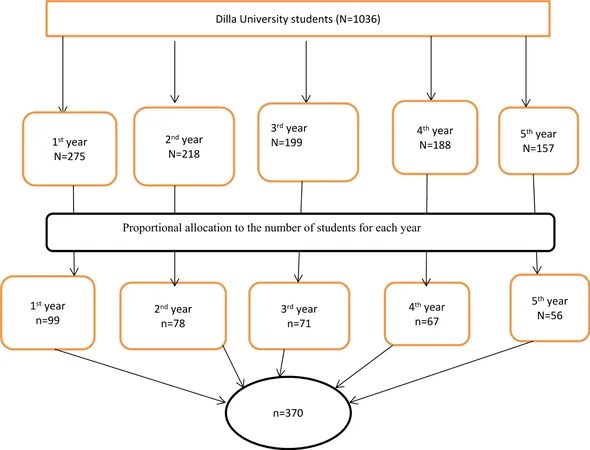
Shocking Costs of Breast Cancer Treatment Revealed: A Deep Dive into Financial Strain by Stage and Care Phase
2024-11-20
Author: Noah
Introduction
Breast cancer is a major health concern for women, accounting for 26% of new cancer diagnoses. In Canada alone, about 30,000 women are diagnosed with breast cancer every year. A recent comprehensive study has shed light on the staggering healthcare costs associated with breast cancer treatment in Ontario, revealing critical insights that could influence healthcare policy and resource allocation.
Study Overview
This investigation analyzed healthcare costs for adult women diagnosed with breast cancer in Ontario between 2017 and 2021. Leveraging a wealth of population-based data, the study sought to update the costs incurred by different stages of the disease, age demographics, and phases of care. The findings are critical to understanding the economic burden of breast cancer, which is vital for public health planning.
Key Findings
Cost Overview: The study identified life-altering financial implications for women diagnosed with breast cancer. On average, women incurred an additional cost of $27,485 per year compared to their cancer-free counterparts.
Variation by Stage: Costs escalated significantly with disease severity. The figures varied dramatically from $15,588 for stage I to an overwhelming $137,319 for stage IV. This indicates that late-stage diagnoses come with not just a heavy emotional toll, but also a crushing financial burden.
Phase of Care Impacts: The initial year following diagnosis incurred the highest costs, averaging $43,408 due to increased resource utilization like outpatient procedures and chemotherapy treatments. In comparison, the terminal phase (the last year of life) accounted for about $25,940 in costs.
Age Matters: Women diagnosed under the age of 70 experienced even greater costs ($28,415) compared to those diagnosed at 70 and older ($25,254). This suggests a pressing need for more focus on younger populations in terms of tailored healthcare support and resources.
Data Methodology
Utilizing linked population-based administrative data, the researchers matched 37,133 breast cancer cases with 185,665 control cases based on demographic factors. By employing robust statistical analysis techniques, they elucidated the relationship between breast cancer stage, age, and healthcare costs, revealing stark disparities between patients.
Implications for Policy and Resource Allocation
The results of this study are not just numbers; they represent profound realities for women battling breast cancer and underscore the vast resources required for effective treatment. By identifying high-cost areas—particularly in the initial and terminal care phases—healthcare providers can strategize better resource allocation. Additionally, this research can inform policymakers about the importance of screening and early-stage treatment to mitigate costs in the healthcare system.
Conclusion
The findings of this study paint a clear picture of the financial strain faced by women diagnosed with breast cancer, with implications that extend beyond individual impact to resonate on a societal scale. Recognizing the exacerbated costs for metastatic cases, younger women, and those in the initial diagnosis phase underlines the need for focused interventions and potential restructuring of healthcare priorities. As we forge ahead, these insights will be pivotal in shaping effective strategies for combatting the economic burden of breast cancer, ensuring better overall care and support.
Stay Informed
These results are part of ongoing research into breast cancer trends and costs. Continuous monitoring and updated studies are crucial as advancements in treatment options and healthcare policies evolve. Understanding the full economic impact of breast cancer is essential for improving outcomes and resource efficiency in the healthcare landscape.
Join the conversation and share your thoughts on how we can better support women facing breast cancer today!









 Brasil (PT)
Brasil (PT)
 Canada (EN)
Canada (EN)
 Chile (ES)
Chile (ES)
 Česko (CS)
Česko (CS)
 대한민국 (KO)
대한민국 (KO)
 España (ES)
España (ES)
 France (FR)
France (FR)
 Hong Kong (EN)
Hong Kong (EN)
 Italia (IT)
Italia (IT)
 日本 (JA)
日本 (JA)
 Magyarország (HU)
Magyarország (HU)
 Norge (NO)
Norge (NO)
 Polska (PL)
Polska (PL)
 Schweiz (DE)
Schweiz (DE)
 Singapore (EN)
Singapore (EN)
 Sverige (SV)
Sverige (SV)
 Suomi (FI)
Suomi (FI)
 Türkiye (TR)
Türkiye (TR)
 الإمارات العربية المتحدة (AR)
الإمارات العربية المتحدة (AR)